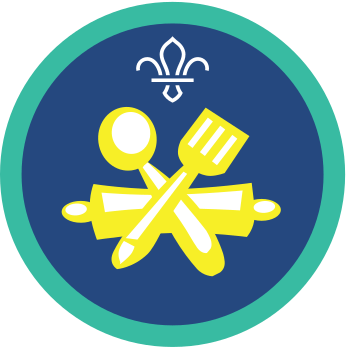Winner, winner, tasty dinner
You’ll need
- Pens or pencils
- A4 paper
Before you begin
- Print enough copies of the ‘Make a meal’ sheet for each small group to have one.
Points make picnics
- Everyone should get into small groups. Someone from each group should get a piece of paper and a pen or pencil. Each group should choose a team name and write it at the top of their piece of paper.
- The person leading the activity should read out the quiz questions and everyone should note down their answers.
- Once the quiz is finished, teams should swap sheets. The person leading the activity should read out the answers and everyone should mark another team’s sheet.
- Everyone should give the sheets back to the groups so they can see how many points they have to spend.
Plan your meals
- The person leading the activity should give each group a copy of the ‘make a meal’ sheet. They should explain that each meal has a cost depending on how long it takes to cook, how much skill it takes to cook, the utensils you need, and how long you can store the ingredients.
- Each group should try to make five balanced meals by ‘spending’ the points they won in the quiz. They should try to make the meals as balanced, healthy, and nutritious as possible without going beyond their ‘budget’.
- Everyone should come together and share their choices. Why did they choose each meal?
|
Question |
Answer |
Points |
|
True or false: a can of coke has over 35g of sugar in? |
True – it has 39 grams |
One |
|
How much water should we try to drink each day? |
About six to eight glasses (1.2 litres – accept anything around this amount) |
One |
|
What’s the recommended daily allowance of salt for adults in the UK? |
Six grams (accept anything around this amount) |
One |
|
True or false: half a can of baked beans has more fibre than an apple? |
True |
One |
|
What’s the best way to get enough vitamin D for healthy bones? |
Sunlight |
One |
|
Which nutrient is the most filling? |
Protein |
One |
|
Sort these drinks in order of most to least caffeine in each 250ml: Red Bull, filter coffee, instant coffee, black tea. |
Filter coffee (100mg), instant coffee (83mg), Red Bull (80mg), black tea (57mg) |
Up to four: one for each correctly placed |
|
True or false: potatoes count towards someone’s five portions of fruit and vegetables a day? |
False |
One |
|
Why is breakfast important?
|
d. All of the above |
One |
|
True or false: humans can survive longer without food than without fluids? |
False |
One |
|
Name three symptoms of dehydration. |
Any three of:
|
Up to three: one for each correct symptom |
|
How many minutes of activity should children and young people aged 5 to 18 do a day? |
60 minutes (accept anything around this amount) |
One |
|
True or false: walking counts as physical activity. |
True |
One |
|
Where in the body does digestion start? |
The mouth – through chewing and saliva breaking down food |
One |
|
How much fruit (or vegetable) juice is a portion of your five a day? |
150 millilitres (a small glass – accept anything around this amount) |
One |
|
Which of these counts as part of your daily fruit and vegetable intake: strawberry jam, beans, or strawberry flavour yoghurt? |
Beans |
One |
|
Fruit and vegetables provide fibre. Why is fibre important? |
Helps to keep our digestive system healthy (accept other correct answers) |
One |
Reflection
In this activity, everyone thought about all of the different factors involved in choosing what to eat. What different things did people have to balance? People had to think about time and skill, storing ingredients, and what utensils they’d need. When might people face these challenges in real life? People could think about wanting a quick (but cheap, tasty, and nutritious) meal after a long, busy day or cooking on a camp without many utensils to hand.
What could people to do to plan ahead and take care of their future selves? People could think about getting basic utensils, practising cooking, and learning meals that use store cupboard ingredients. How could people achieve these things and improve their skills in the kitchen? What may happen as a result? People would probably be able to choose from a bigger range of good quality, healthy, tasty meals without wasting as much food.
Safety
All activities must be safely managed. You must complete a thorough risk assessment and take appropriate steps to reduce risk. Use the safety checklist to help you plan and risk assess your activity. Always get approval for the activity, and have suitable supervision and an InTouch process.
People could work alone if they don’t want to work in a group. People could combine points with another group and try to make a varied plan of 10 meals.
There are lots of reasons people might find talking about food tricky, including eating disorders, disordered eating, sensory sensitivities, and a lack of access to food or cooking facilities. Be sensitive in how you approach this activity – some people may appreciate knowing you’ll cover the topic in advance, you might need to take extra care to avoid talking too negatively about food (including food higher in sugar or fat), or you may want to keep it general and avoid asking people about their personal experiences, for example.
All Scout activities should be inclusive and accessible.
Think about food waste – if you’ve used an ingredient, what could you do to make sure any extra doesn’t go to waste?
Young people should be free to plan meals and choose foods that they like to eat. If anyone disagrees with any of the scores (and can justify why), they can change them.

